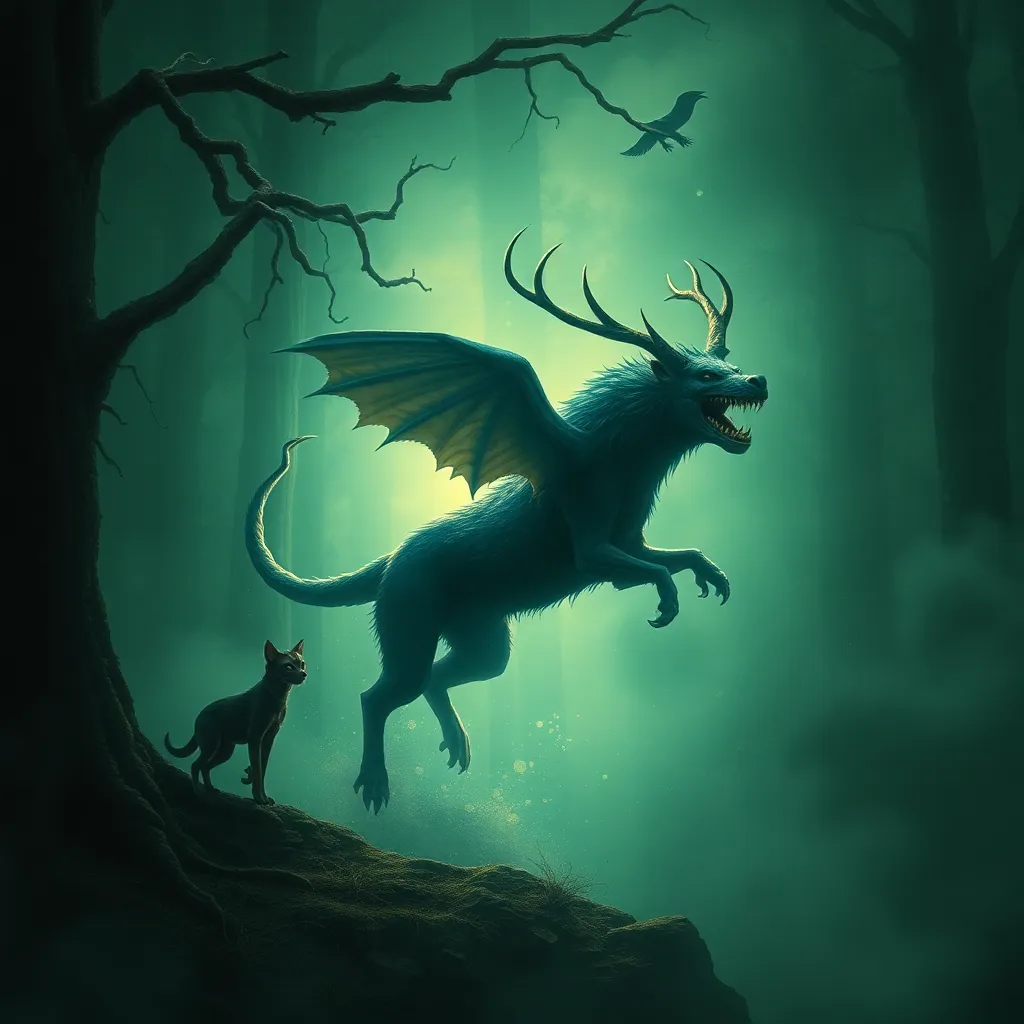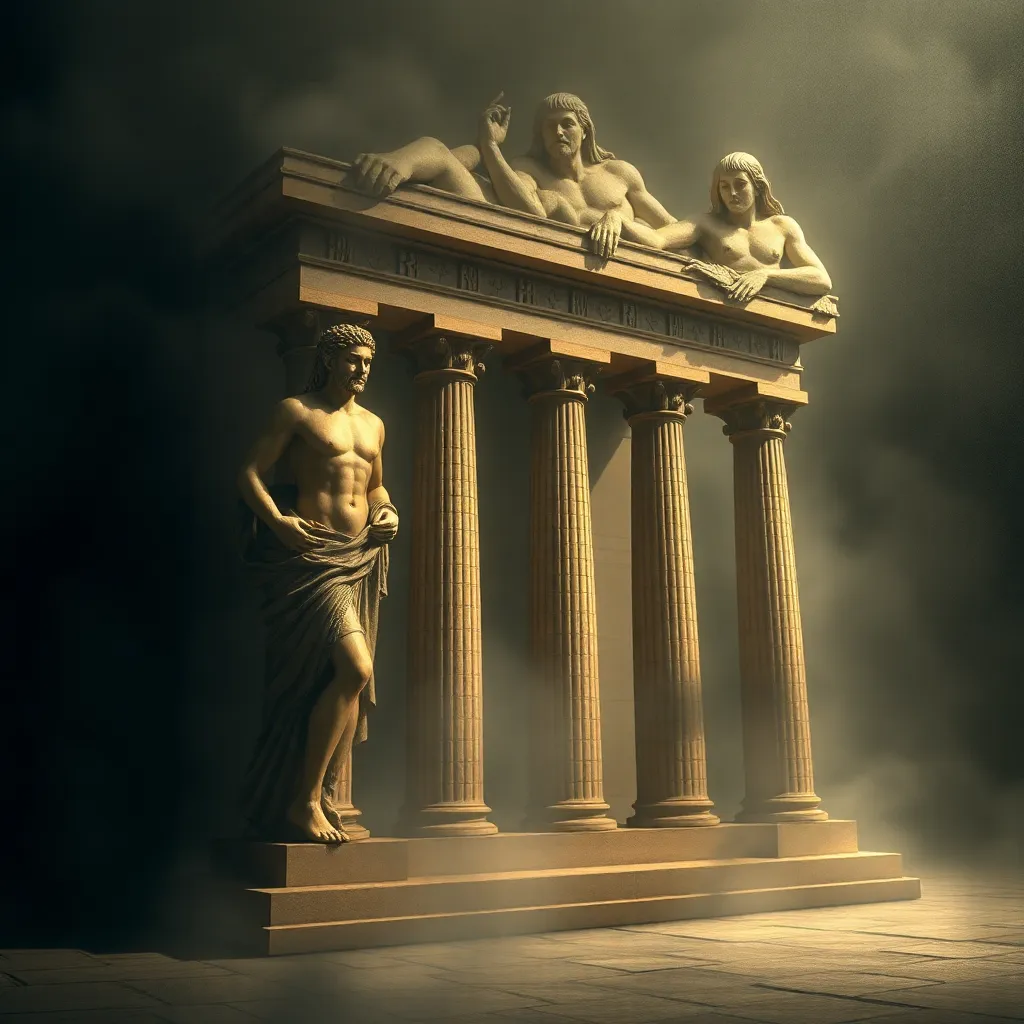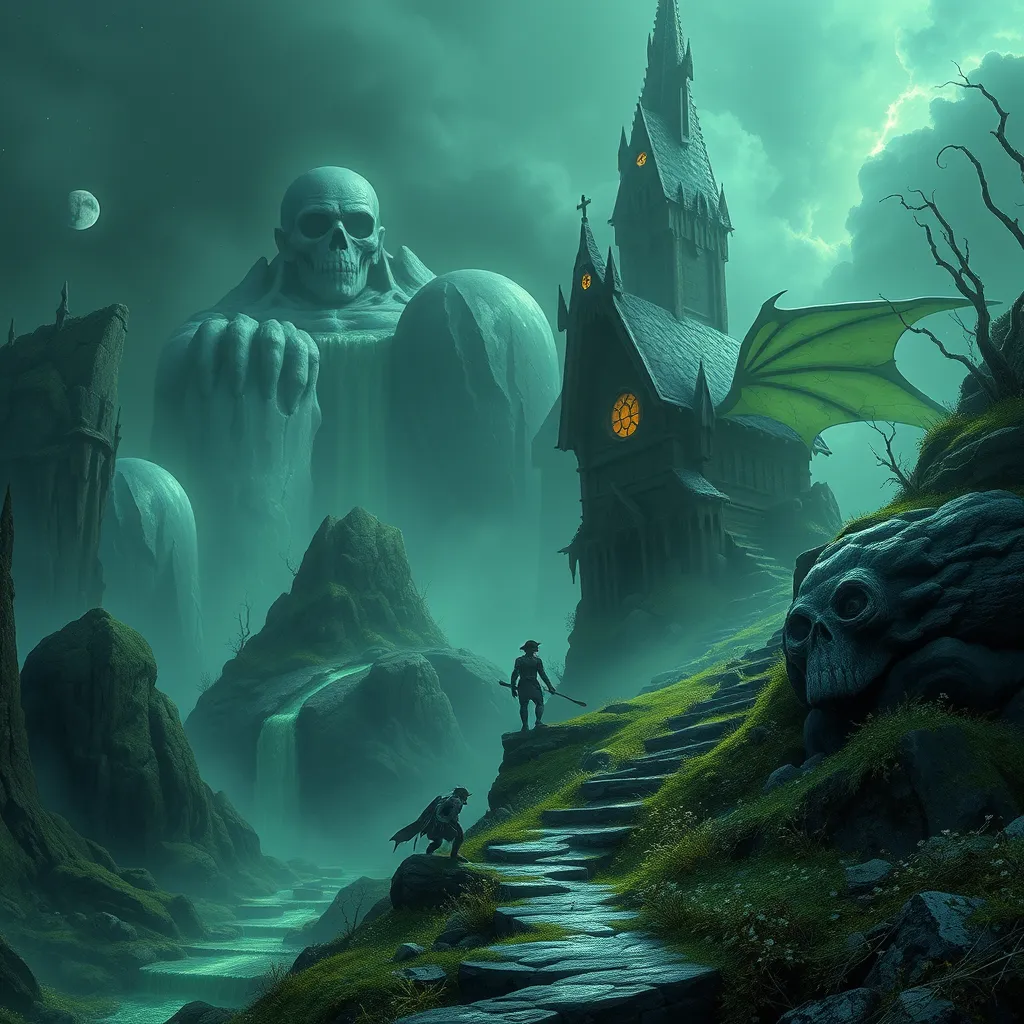The Chupacabra and the Human-Animal Divide: Exploring the Myth’s Representation of the Wild
I. Introduction
The Chupacabra, a creature synonymous with mystery and fear, has captured the imaginations of many since its emergence in folklore. This mythical being, often described as a blood-sucking predator, serves as a fascinating lens through which we can examine the human-animal divide. This divide, a reflection of humanity’s relationship with the natural world, is crucial for understanding how myths like the Chupacabra arise and evolve.
This article aims to explore the Chupacabra myth, delving into its historical context, characteristics, cultural significance, and the broader implications for how we understand the boundaries between humans and animals.
II. Historical Context of the Chupacabra Legend
A. Origins of the Chupacabra myth in Puerto Rico
The Chupacabra legend originated in Puerto Rico in the mid-1990s. Reports of livestock, particularly goats, being drained of blood began to surface, leading to widespread panic and speculation about this mysterious creature. The term “Chupacabra,” which translates to “goat-sucker” in Spanish, quickly became associated with these bizarre incidents.
B. Evolution of the myth over time
Initially characterized as a reptilian creature with spikes or quills along its back, the Chupacabra myth has undergone significant transformations. As sightings continued, descriptions varied widely, leading to portrayals that included canine-like features, alien characteristics, and even vampiric qualities.
C. Cultural influences shaping the narrative
The Chupacabra has been shaped by various cultural influences, including Taino mythology and modern media. The blending of indigenous beliefs with contemporary fears and experiences has enriched the narrative, allowing it to resonate with diverse populations across the Americas.
III. Characteristics of the Chupacabra
A. Description and physical traits
Descriptions of the Chupacabra vary, but common traits include:
- Reptilian skin, often green or gray in color
- Sharp fangs and a pronounced jaw
- Spines or quills along the back
- Eyes that glow in the dark
B. Behavioral patterns and hunting practices
The Chupacabra is often depicted as a nocturnal hunter, stalking livestock under the cover of darkness. Reports typically describe it as being stealthy and cunning, employing a strategy of surprise to attack its prey, primarily goats.
C. Comparisons with other mythical creatures
When compared to other legendary beings, the Chupacabra shares similarities with creatures like the vampire and the werewolf, both of which embody human fears and societal anxieties about predation and the unknown.
IV. The Human-Animal Divide: A Theoretical Framework
A. Definition of the human-animal divide
The human-animal divide refers to the conceptual separation between humans and non-human animals, often characterized by differing moral and ethical considerations. This divide influences how societies perceive wildlife and their roles in ecosystems.
B. Philosophical perspectives on nature and humanity
Philosophers have long debated humanity’s place in nature. Some argue for a more harmonious relationship with the natural world, while others advocate for a dominant, utilitarian view. These perspectives shape folklore and myths, including those about creatures like the Chupacabra.
C. Implications for understanding folklore and mythology
Examining the human-animal divide through folklore reveals deeper societal fears and values. Myths often serve as reflections of cultural attitudes towards nature, encapsulating anxieties about the wild and the unknown.
V. The Chupacabra as a Symbol of the Wild
A. Representations of wilderness and untamed nature
The Chupacabra embodies the untamed aspects of nature, representing the wilderness that lies beyond human control. This portrayal taps into a collective fear of the unknown that exists in many cultures.
B. Fear and fascination with the unknown
The duality of fear and fascination can be seen in the public’s response to the Chupacabra. While many express terror at the thought of such a creature, others are intrigued, leading to a cultural fascination with the myth.
C. The role of the Chupacabra in environmental discourse
As an emblem of the wild, the Chupacabra has found its way into discussions about environmental conservation and the impact of human activity on ecosystems. It serves as a reminder of the delicate balance between humanity and nature.
VI. The Chupacabra in Popular Culture
A. Depictions in film, literature, and media
The Chupacabra has made its way into various forms of popular culture, including:
- Movies such as “Chupacabra: Dark Seas”
- Books and graphic novels exploring its legend
- Television shows featuring cryptozoological themes
B. Impact on societal perceptions of wildlife
The portrayal of the Chupacabra has influenced how people perceive real wildlife, often blurring the line between myth and reality. This can lead to misunderstanding and fear of actual animals that inhabit local environments.
C. Influence on modern cryptozoology
The legend of the Chupacabra has spurred interest in cryptozoology, the study of and search for animals whose existence is not substantiated by mainstream science. This interest fuels expeditions and investigations into the unknown.
VII. The Psychological and Sociocultural Implications
A. The Chupacabra as a reflection of human fears
The Chupacabra myth reflects deep-seated human fears about predation, loss, and the unknown. As societies face environmental changes, these fears manifest in the form of legends and myths.
B. Myths as a means of coping with environmental changes
Folklore serves as a coping mechanism for communities facing ecological disruptions. The Chupacabra can be seen as a narrative that helps people process their anxieties regarding changes in the natural world.
C. The role of folklore in community identity and cohesion
Folklore, including the Chupacabra myth, plays a vital role in shaping community identity. Sharing stories fosters a sense of belonging and connection among individuals, reinforcing cultural narratives that bind communities together.
VIII. Conclusion
A. Summary of key points
The Chupacabra myth is a powerful representation of the human-animal divide, illustrating humanity’s complex relationship with nature. Its origins in Puerto Rican folklore, evolving characteristics, and cultural significance highlight the ongoing dialogue between humans and the wild.
B. The lasting legacy of the Chupacabra myth
As a symbol of fear and fascination, the Chupacabra continues to resonate in modern culture, influencing perceptions of wildlife and the natural world.
C. Final thoughts on the human-animal relationship in folklore and nature
Ultimately, the Chupacabra serves as a reminder of the delicate balance we must maintain with the natural world. Understanding myths like this can deepen our appreciation for the wilderness and our place within it.



